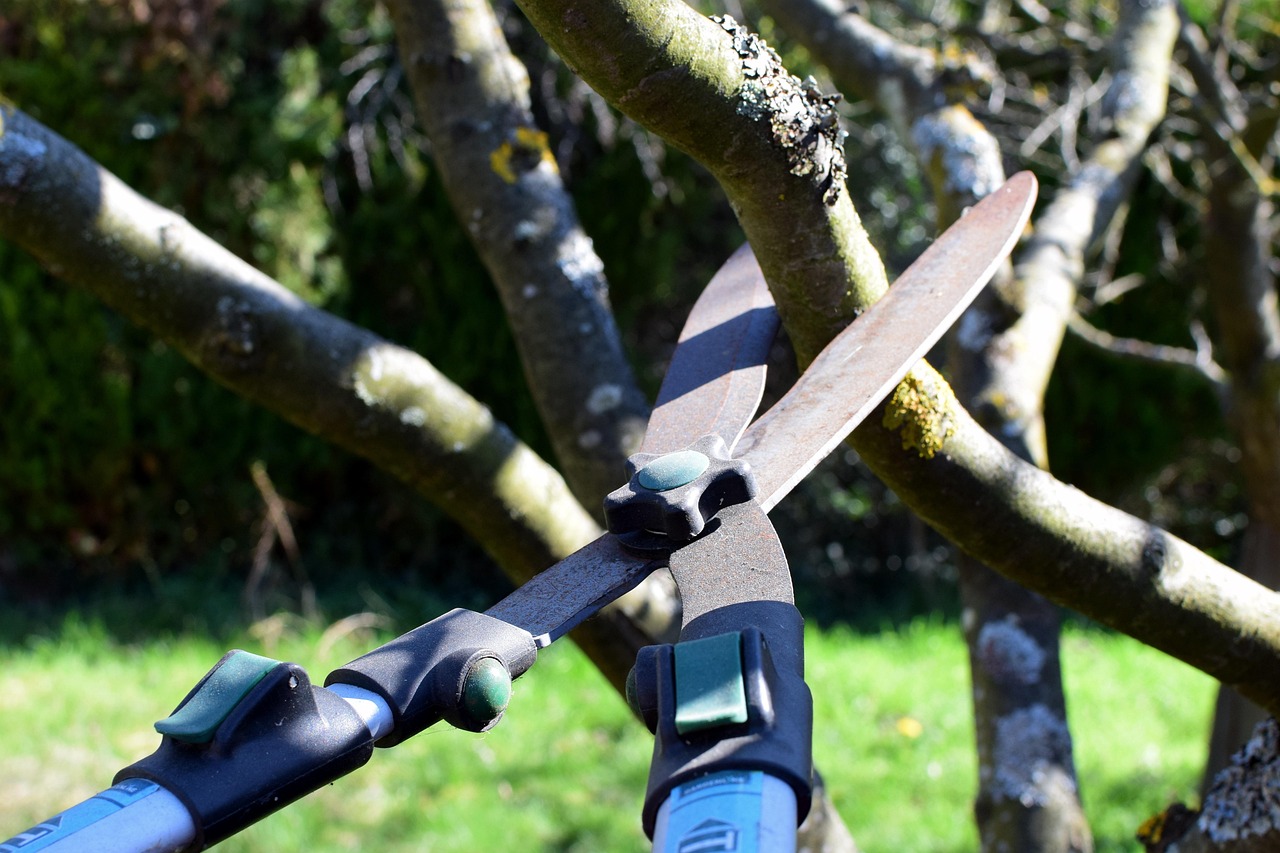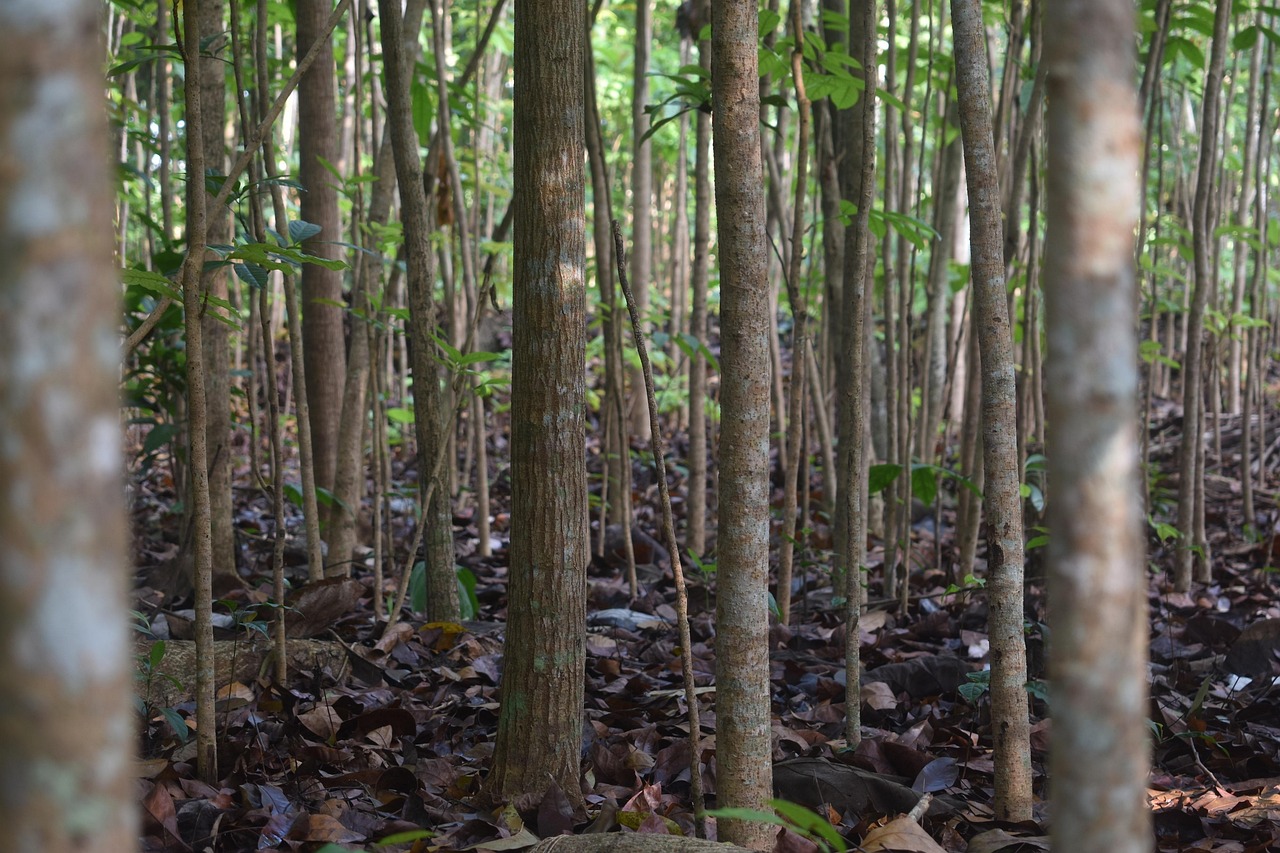Pruning mahogany trees is essential for promoting valuable timber growth and ensuring sustainability. Proper pruning techniques improve tree structure, enhance wood quality, and encourage healthy growth, ultimately leading to a more profitable yield.
Mahogany trees, renowned for their rich color and durability, are a prized resource in the timber industry. These trees grow best in tropical climates and can reach impressive heights, making them a popular choice for furniture, cabinetry, and flooring. However, to maximize the timber’s quality and value, proper cultivation practices, particularly pruning, are crucial.

Pruning serves multiple purposes, including removing dead or diseased branches, enhancing air circulation, and shaping the tree for optimal growth. When done correctly, pruning can significantly increase the timber’s quality by encouraging straight, strong growth and reducing defects such as knots or irregularities.
Understanding Mahogany Trees
Mahogany trees belong to the genus Swietenia, with the most commonly known species being Swietenia macrophylla. These trees are native to Central America and parts of South America but are also cultivated in various tropical regions around the world. Here are some key characteristics of mahogany trees:
- They can grow up to 150 feet tall.
- Their leaves are large and glossy, providing ample shade.
- Mahogany wood is highly valued for its fine grain and reddish-brown hue.
Due to the high demand for mahogany wood, sustainable forestry practices are essential. Unsustainable logging has led to significant reductions in mahogany populations in the wild. Pruning is one way to manage populations effectively while ensuring that timber production is sustainable.

Benefits of Pruning Mahogany Trees
Pruning mahogany trees offers several benefits that contribute to their overall health and productivity. Some of the primary advantages include:
- Improved Timber Quality: Pruning encourages straight growth by removing competing branches. This results in a higher quality of timber free from defects.
- Increased Light Penetration: By thinning the canopy, light can reach lower branches, promoting healthy growth throughout the tree.
- Enhanced Air Circulation: Proper pruning reduces humidity within the tree’s canopy. This helps prevent fungal infections and pests.
- Better Structural Integrity: Removing weak or damaged branches strengthens the tree’s structure, making it less likely to break during storms or adverse weather conditions.
In addition to these benefits, prudent pruning practices can extend the life of mahogany trees. Healthy trees are more resilient against diseases and pests, which is vital for long-term timber production.
Best Practices for Pruning Mahogany Trees
To achieve the best results from pruning mahogany trees, consider the following best practices:

- Timing: The best time to prune mahogany trees is during their dormant season, typically late winter or early spring. This minimizes stress on the tree and reduces the risk of disease.
- Tools: Use sharp and clean pruning tools to make clean cuts. This reduces the risk of injury to the tree and helps prevent diseases from entering through open wounds.
- Technique: Always prune at a slight angle just above a bud or lateral branch. This encourages new growth and minimizes water accumulation on the cut surface.
- Aim for Balance: Ensure that pruning maintains a balanced shape. Avoid removing more than 25% of the tree’s foliage in one season, as this can shock the tree.
By adhering to these practices, you can promote healthy growth and improve the quality of mahogany timber. It is also essential to monitor the tree’s response post-pruning and adjust your techniques accordingly for future seasons.
Common Mistakes in Pruning
<pWhile pruning is beneficial, there are common mistakes that can hinder growth or damage mahogany trees:
- Over-Pruning: Removing too many branches can stress the tree and reduce its ability to photosynthesize effectively.
- Poor Cuts: Making jagged or uneven cuts can lead to improper healing and invite pests or diseases.
- Ignoring Tree Health: Failing to assess the tree’s overall health before pruning may lead to unnecessary damage.
Avoiding these mistakes is vital for ensuring that your mahogany trees thrive and produce high-quality timber for years to come. Proper care and knowledge about pruning techniques will lead to healthier trees and a more sustainable approach to timber production.

Pruning Techniques for Mahogany Trees
Understanding the various pruning techniques is essential for promoting the health and productivity of mahogany trees. Different methods can be applied based on the tree’s age, size, and desired outcomes. Here are several effective pruning techniques:
Crown Thinning
Crown thinning involves selectively removing branches from the upper canopy of the tree. This technique enhances light penetration and air circulation within the tree, which is crucial for healthy growth.
- Benefits: Increases sunlight exposure to lower branches, improves structure, and reduces wind resistance.
- How to Perform: Focus on removing smaller branches rather than larger ones. Aim to maintain a balanced canopy.
Crown Raising
Crown raising is the process of removing lower branches to elevate the tree’s crown. This technique is particularly useful for creating space beneath the tree for other plants or for aesthetic purposes.
- Benefits: Enhances visibility, allows for underplanting, and reduces competition for resources.
- How to Perform: Begin by selectively removing lower branches while ensuring you do not harm the overall structure of the tree.
Crown Reduction
Crown reduction involves shortening the height of the tree. This method is useful when a mahogany tree grows too tall or poses a risk to nearby structures or power lines.
- Benefits: Reduces tree height while maintaining its health and shape.
- How to Perform: Cut back the top branches to lateral branches. Ensure cuts are made just above a bud or lateral branch to encourage new growth.
Seasonal Considerations for Pruning
The timing of pruning can significantly affect the health and productivity of mahogany trees. Understanding seasonal considerations can help optimize growth.
Winter Pruning
Winter is an ideal time for pruning mahogany trees in tropical climates when they are dormant. This period minimizes stress on the tree and allows for easier visibility of the tree’s structure.
- Advantages: Reduced risk of disease, better visibility of branches, and less sap loss.
- Considerations: Ensure that temperatures are not extremely low, as this can stress the tree.
Spring Pruning
Pruning in early spring before new growth begins can stimulate healthy development in mahogany trees.
- Advantages: Encourages vigorous growth during the growing season, allowing the tree to recover quickly.
- Considerations: Be cautious not to prune too late in spring, as this may remove buds that will develop into leaves.
Pest and Disease Management During Pruning
While pruning is beneficial, it can also expose mahogany trees to pests and diseases if not done correctly. Implementing effective pest and disease management strategies is vital during pruning sessions.
Pest Management
Pests such as bark beetles and caterpillars can threaten mahogany trees. Here are some strategies to manage these pests:
- Regular Inspections: Monitor your trees for signs of pest damage, such as holes or discolored leaves.
- Use of Insecticides: If pests are detected, appropriate insecticides may be applied according to local regulations and guidelines.
- Encouraging Natural Predators: Birds and beneficial insects can help control pest populations naturally.
Disease Prevention
Diseases such as root rot or leaf spot can affect mahogany trees. Preventive measures include:
- Proper Wound Care: Seal large pruning cuts with a tree wound dressing to protect against pathogens.
- Avoiding Overwatering: Ensure that trees are not overwatered, as this can lead to root diseases.
- Selecting Healthy Specimens: When planting new mahogany trees, choose disease-resistant varieties whenever possible.
The Role of Soil Health in Pruning Success
The health of the soil in which mahogany trees grow plays a crucial role in their overall vitality and response to pruning. Healthy soil promotes strong root systems that support robust growth.
Soil Composition
A balanced soil composition rich in organic matter is ideal for mahogany trees. Key components include:
- Nutrients: Essential nutrients such as nitrogen, phosphorus, and potassium are vital for healthy growth.
- PH Level: Maintain a neutral pH level between 6.0 and 7.0 for optimal nutrient absorption.
- Aeration: Ensure good soil aeration to promote root health; compacted soil can hinder growth.
Soil Testing
Regular soil testing can help determine nutrient levels and any necessary amendments. This proactive approach supports healthy trees that respond positively to pruning efforts.
- Frequency: Conduct soil tests every few years or when noticeable changes occur in tree health.
- Interpreting Results: Work with agricultural extension services or soil specialists to understand test results and determine necessary amendments.
By focusing on soil health, you set the foundation for successful pruning practices that lead to valuable timber growth in mahogany trees.
Harvesting Mahogany Timber
Once mahogany trees reach maturity, the harvesting process becomes critical. Proper harvesting techniques ensure that the timber retains its quality while promoting sustainability. Understanding the right time and methods for harvesting is essential for successful timber production.
Determining Harvest Time
The timing of harvesting mahogany timber can significantly impact the wood’s quality. Trees typically become commercially viable for harvest after 15 to 25 years, depending on growth conditions.
- Diameter Measurement: A general rule is to harvest when the tree reaches a diameter of at least 12 inches at breast height (DBH).
- Growth Indicators: Look for signs of maturity, such as a fully developed crown and healthy foliage.
- Seasonal Considerations: The best time to harvest is during the dry season when sap flow is reduced, minimizing damage to the tree.
Harvesting Methods
There are several methods for harvesting mahogany timber. The choice of method can depend on factors such as the terrain, tree size, and environmental regulations.
Selective Logging
Selective logging involves removing only specific trees while leaving others intact. This method helps maintain the overall health of the forest ecosystem.
- Advantages: Reduces environmental impact, promotes biodiversity, and allows remaining trees to grow without competition.
- Considerations: Requires careful planning to ensure that the surrounding trees are not damaged during the process.
Clear-Cutting
Clear-cutting involves removing all trees in a designated area. While this method can yield immediate profits, it has significant ecological consequences.
- Advantages: Maximizes short-term timber yield and can be effective in areas with low ecological value.
- Considerations: Can lead to soil erosion, loss of habitat, and disruption of local ecosystems.
Sustainable Forestry Practices
Sustainable forestry practices are crucial for ensuring that mahogany timber production does not compromise environmental integrity. Implementing these practices can help maintain healthy forests for future generations.
Reforestation
After harvesting mahogany trees, reforestation is essential to restore the ecosystem. Here are some key practices:
- Planting Young Trees: Introduce new saplings immediately following timber removal to promote forest regeneration.
- Diversity: Plant a variety of species alongside mahogany to enhance biodiversity and soil health.
- Monitoring Growth: Regularly check the growth of newly planted trees to ensure they are thriving in their environment.
Certification Programs
Participating in certification programs can help ensure that mahogany harvesting is conducted sustainably. These programs provide guidelines for responsible forestry practices.
- FSC Certification: The Forest Stewardship Council (FSC) provides standards for responsible forest management, ensuring that timber is sourced sustainably.
- PEFC Certification: The Programme for the Endorsement of Forest Certification (PEFC) promotes sustainable forest management through independent certification.
The Economic Impact of Mahogany Timber Production
The economic implications of mahogany timber production extend beyond individual growers. The industry plays a vital role in local and national economies.
Job Creation
The mahogany timber industry creates employment opportunities in various sectors, including forestry, milling, and woodworking.
- Forestry Management: Jobs in tree planting, maintenance, and sustainable forestry practices contribute to the economy.
- Milling Operations: Local sawmills provide jobs for processing harvested timber into usable products.
- Crafters and Artisans: Skilled labor in woodworking and crafting contributes to local economies by producing finished goods from mahogany.
Revenue Generation
The sale of mahogany timber generates significant revenue for local communities and national governments. This revenue can be reinvested into public services and infrastructure.
- Timber Sales: High-quality mahogany commands premium prices in global markets, providing substantial income for growers.
- Tourism Opportunities: Sustainable forestry practices can promote eco-tourism, attracting visitors interested in natural resources and conservation.
- Cultural Heritage: Mahogany products contribute to cultural identity and craftsmanship, enhancing market value.
The Future of Mahogany Tree Pruning and Timber Production
The future of mahogany tree pruning and timber production relies on continued education and sustainable practices. As demand for quality wood continues to rise, the industry must adapt to changing market conditions while maintaining ecological balance.
Technological Innovations
Advancements in technology are shaping the future of mahogany forestry. New tools and techniques can improve efficiency and sustainability.
- Drones: Drones can monitor tree health and growth patterns, allowing for precise management strategies.
- Sensors: Soil moisture and nutrient sensors can provide real-time data to optimize growth conditions.
- Biodiversity Monitoring: Technology can assist in tracking biodiversity levels within forests to ensure balanced ecosystems.
Community Engagement
Engaging local communities in sustainable forestry practices is vital for long-term success. Education programs can empower individuals with knowledge about proper pruning techniques and environmental stewardship.
- Workshops: Hosting workshops on sustainable practices can foster a sense of community responsibility towards forest management.
- Incentive Programs: Providing incentives for sustainable practices encourages local farmers to adopt environmentally friendly methods.
- Civic Participation: Involving community members in decision-making processes enhances transparency and support for forestry initiatives.
The future of mahogany tree pruning hinges on a commitment to sustainability, innovation, and community involvement. By embracing these principles, the industry can thrive while preserving valuable resources for generations to come.
Challenges and Opportunities in Mahogany Timber Management
While there are numerous benefits associated with mahogany tree pruning and timber production, there are also several challenges that need to be addressed. Understanding these challenges can help stakeholders develop more effective strategies for sustainable management.
Environmental Challenges
Environmental factors can significantly impact the growth and health of mahogany trees. Some of the main challenges include:
- Climate Change: Changes in temperature and rainfall patterns can affect growth rates and increase vulnerability to pests and diseases.
- Deforestation: Unsustainable logging practices can lead to habitat loss and biodiversity decline, threatening the ecosystem in which mahogany trees thrive.
- Pest Infestations: An increase in pest populations can severely damage mahogany trees, leading to reduced timber quality and quantity.
Economic Pressures
The global demand for mahogany timber places pressure on growers to maximize outputs, which can sometimes lead to unsustainable practices.
- Market Fluctuations: Price volatility can affect the profitability of mahogany timber, making it challenging for growers to maintain sustainable practices.
- Competition: The availability of cheaper substitutes can detract from the market value of mahogany, prompting some growers to cut corners.
- Investment Needs: Sustainable practices often require upfront investments in training, tools, and technology that may not yield immediate returns.
Social Considerations
Engagement with local communities is critical for the long-term success of mahogany timber management. However, social challenges can arise:
- Community Awareness: Lack of knowledge about sustainable practices can hinder effective participation from local communities.
- Cultural Attitudes: Traditional practices may conflict with modern sustainable methods, making it necessary to find common ground.
- Equity Issues: Ensuring fair access to resources and benefits from timber production is essential for community support and involvement.
Innovative Practices and Technologies
To overcome these challenges, the integration of innovative practices and technologies is vital. Various advancements can help improve the sustainability and efficiency of mahogany tree management.
Agroforestry
Agroforestry combines agricultural practices with forestry, allowing for multiple land uses that benefit both farmers and the environment.
- Diversity of Crops: Growing food crops alongside mahogany trees can improve soil health and provide additional income sources for farmers.
- Microclimate Creation: Trees can help regulate temperature and moisture levels, creating a more favorable environment for crops.
Biotechnology
The application of biotechnology in forestry can lead to improved tree varieties that are more resistant to pests and diseases.
- Genetic Engineering: Developing genetically modified organisms (GMOs) can enhance growth rates and resilience against environmental stressors.
- Tissue Culture: This technique allows for the rapid propagation of high-quality saplings, ensuring a consistent supply of healthy trees.
Final Thoughts
The cultivation and management of mahogany trees through proper pruning techniques and sustainable practices present a unique opportunity to balance economic needs with environmental stewardship. By implementing best practices, engaging local communities, and embracing innovation, the future of mahogany timber production can be both profitable and sustainable.
The importance of education cannot be overstated. Training programs that focus on effective pruning methods, pest management, soil health, and environmental conservation will empower growers and communities alike. This knowledge transfer is crucial for fostering a responsible timber industry that values both profit and preservation.
Additionally, addressing the challenges posed by climate change, economic pressures, and social dynamics will require collaboration among stakeholders. Governments, non-governmental organizations, businesses, and local communities must work together to develop solutions that benefit all parties involved.
Ultimately, the responsible management of mahogany trees is not just about producing valuable timber; it is about creating a sustainable legacy that ensures these magnificent trees continue to thrive for generations to come. By prioritizing sustainability, innovation, and community engagement, we can secure a future where mahogany stands as a symbol of both ecological richness and economic viability.
